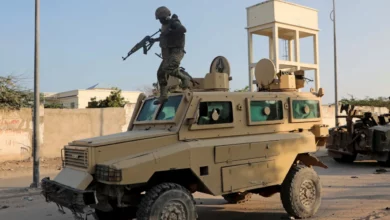
A joint Egyptian-German archaeological mission from the University of Würzburg, working in the Abu Sir archaeological area at Giza have discovered a series of store rooms inside the pyramid of King Sahure for the first time.
The Secretary General of the Supreme Council of Antiquities in Egypt, Mostafa Waziri, stressed the importance of this find as it helps unveils the architectural design behind the pyramid of King Sahure, the second king of the Fifth Dynasty (2400 BC) and the first king to be buried in Abu Sir area.
These warehouses will be made available for future study as soon as the mission finishes its work, and will also be opened for Egyptian and foreign visitors in the near future, Waziri said.
An enlightening discovery
A total of eight chambers have been discovered, the head of the joint Egyptian-German archaeological mission, Mohamed Ismail Khaled, said.
He added that although the northern and southern parts of the warehouse area were severely damaged, especially the ceiling and floor, it is still possible to see the remains of the original building plan.
The chambers were documented accurately, which greatly contributed to understanding the interior design of King Sahure’s pyramid, he explained.
The team also revealed the original dimensions of the front room of King Sahure’s burial chamber, which was damaged over time, as its eastern wall suffered severe damage.
Only the northeastern corner and 0.30 meters of the eastern wall could be discovered.
The mission built new supporting walls in place of the demolished ones.
The mission also uncovered traces of a low corridor previously mentioned by the English architect John Perring, who was one of the first explorers of the pyramid’s interior back in 1836.
Perring stated that this corridor was full of debris and that he was not able to enter due to the dilapidated structural condition of the pyramid.
However, he suggested that this low passageway may have led to a set of store rooms for funerary furniture.
Technological aid
The Egyptian-German mission cleaned up the corridor using state-of-the-art technologies, including 3D laser scanning.
The team, in cooperation with the 3D Geoscan team, conducted a survey of the areas discovered inside the pyramid, which allowed for comprehensive mapping of each of the vast outdoor areas, narrow corridors and rooms within.
The Egyptian-German archaeological mission began its work at the site in 2019 through the conservation and restoration project for the Pyramid of King Sahure.
It received support from the Antiquities Endowment Fund of the American Research Center in Egypt, with the aim of protecting the internal parts of the Pyramid of Sahure.




